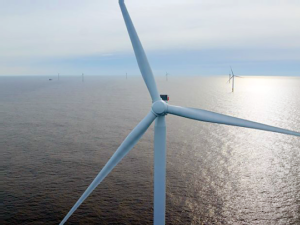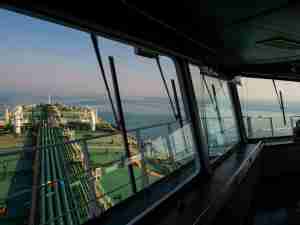Russia’s crude shipments tumbled in the week to Aug. 12, dropping to their lowest since March. The volume sent to key Asian buyers, who have stepped in to take barrels shunned by Europe, fell to its smallest since Russian troops invaded Ukraine in February.
Even if all the crude on ships showing no final destination ends up in Asia, the flow would still be the smallest since March. While a single week’s figures are not enough to signal the start of a trend, lower flows to China and India, Russia’s two largest export markets, will cause concern in the Kremlin. Shipments to Asia have been drifting lower from a plateau of about 2 million barrels a day sustained from mid-April to mid-June.
There is no suggestion yet that India is turning its back on the Russian barrels that it has been so keen to buy at steep discounts after they were forced out of traditional European markets. India’s oil purchasing decisions will continue to “be guided by our energy security requirements,” Ministry of External Affairs spokesman Arindam Bagchi told reporters on Friday.
Russia is also continuing its efforts to develop new markets for its crude. A third tanker is heading to cash-strapped Sri Lanka and two vessels have arrived at El Hamra on Egypt’s Mediterranean coast since Russian Foreign Minister Sergei Lavrov visited the country last month.
Using a four-week moving average to smooth out some of the variability in the weekly figures, Russia’s seaborne crude shipments have stabilized at a level about 500,000 barrels a day below the peak they reached after Moscow’s troops invaded Ukraine, and remain little changed from where they were before the attack. On this basis, seaborne exports edged lower in the week to Aug. 12, slipping to 3.24 million barrels a day from 3.32 million the previous week, according to vessel-tracking data monitored by Bloomberg.
Based on current destinations, the average flow of Russian crude to Asia fell below 1.75 million barrels a day, down from more than 2.1 million barrels a day in April and May. Shipments to European buyers including those in northern Europe, the Mediterranean and the Black Sea region were also lower at 1.32 million barrels a day, down from more than 1.85 million a day before the invasion.
Inflows to the Kremlin's war chest from crude export duty remain higher than they were before the war, with four-week average income still running some $30 million above levels seen in January and February.
Crude Flows by Destination:
-
Asia
The volume of crude on tankers heading for Asian destinations fell in the four weeks to Aug. 12, dropping to its lowest since the period ending on April 1. Most of the tankers carrying crude to unknown Asian destinations are signaling the Suez Canal, with final discharge points unlikely to be apparent until they have passed through the waterway into the Red Sea, at the earliest.
-
Europe
The volume shipped from Russia to northern Europe in the four weeks to Aug. 12 rebounded from the lows of recent weeks, averaging 372,000 barrels a day. Shipments to storage tanks in Rotterdam dominate the flow.
Shipments to Mediterranean countries edged lower, but remain about 50% higher than they were before the invasion of Ukraine.
Combined shipments to Bulgaria and Romania fell back, dropping to their lowest since the four-week period ending April 22.
Flows by Export Location
Aggregate crude flows from Russian ports fell by 804,000 barrels a day, or 22%, in the seven days to Aug. 12 from a revised figure for the previous week. Flows were lower than during the previous week from all export regions.
Export Revenue
Moscow’s weekly revenue from export duty fell by $42 million, or 22%, to $145 million, according to calculations by Bloomberg. Revenues were the lowest in seven weeks, but remained above the average level seen this year in the weeks before Russian troops invaded Ukraine.
Origin-to-Location Flows
The following charts show the number of ships leaving each export terminal and the destinations of crude cargoes from each of the four export regions.
A total of 27 tankers loaded 20 million barrels from the country’s export terminals in the week to Aug. 12, vessel-tracking data and port agent reports show. That’s down by 5.6 million barrels from the previous week. Destinations are based on where vessels signal they are heading at the time of writing, and some will almost certainly change as voyages progress.
The total volume of crude on ships loading from Russia’s Baltic terminals gave up the gains seen the previous two weeks.
Flows from Novorossiysk in the Black Sea tumbled, with shipments equaling their lowest since April. Flows to Mediterranean countries dropped by half.
Arctic shipments gave up the previous week’s gain, with all cargoes heading to destinations in Europe for the first time in four weeks.
Crude flows from Russia’s eastern oil terminals fell to their lowest since late April, driven by a drop in flows of ESPO crude from Kozmino and no shipments of Sokol or Sakhalin Blend grades.








